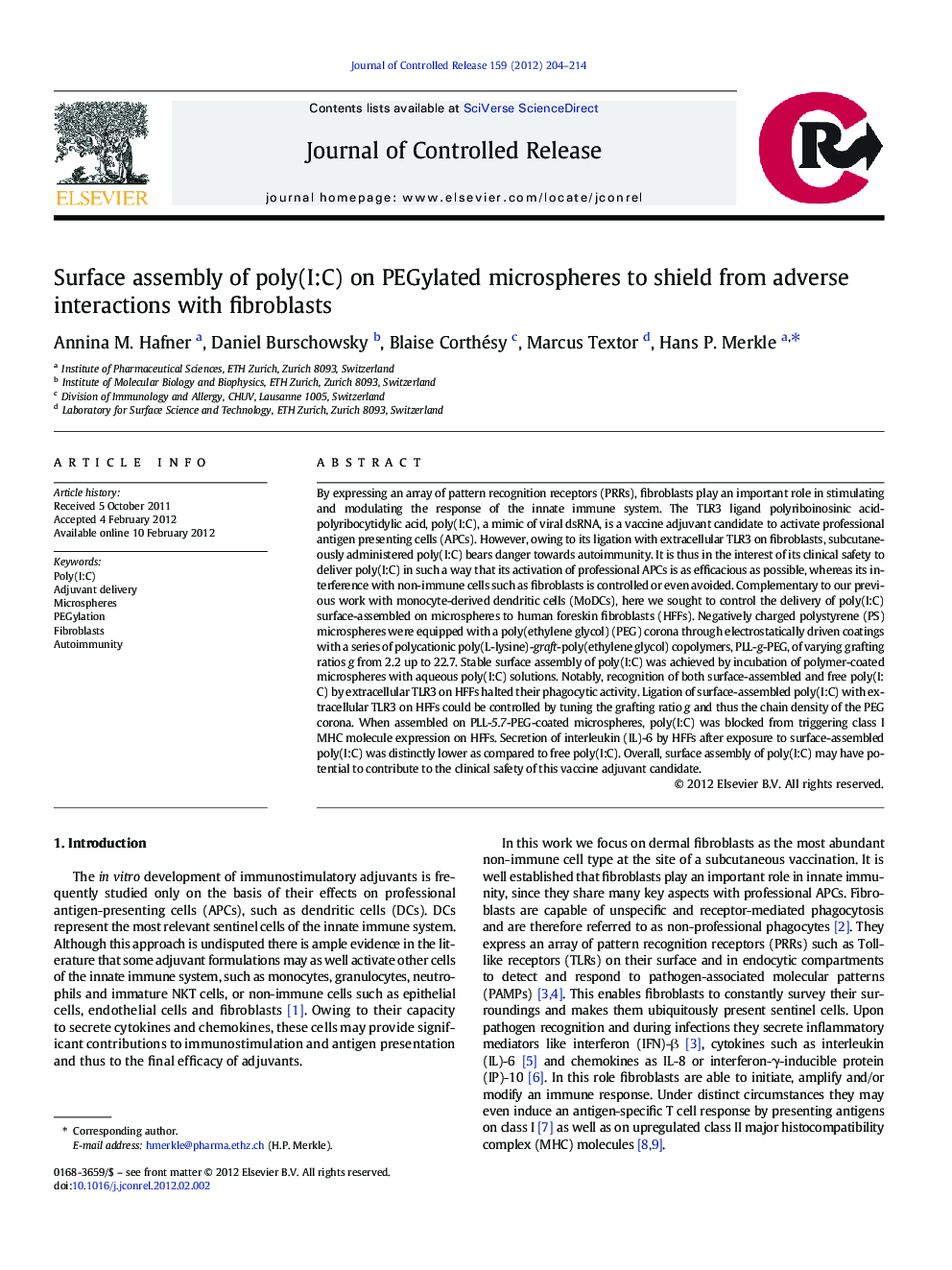| کد مقاله | کد نشریه | سال انتشار | مقاله انگلیسی | نسخه تمام متن |
|---|---|---|---|---|
| 1424805 | 986740 | 2012 | 11 صفحه PDF | دانلود رایگان |

By expressing an array of pattern recognition receptors (PRRs), fibroblasts play an important role in stimulating and modulating the response of the innate immune system. The TLR3 ligand polyriboinosinic acid-polyribocytidylic acid, poly(I:C), a mimic of viral dsRNA, is a vaccine adjuvant candidate to activate professional antigen presenting cells (APCs). However, owing to its ligation with extracellular TLR3 on fibroblasts, subcutaneously administered poly(I:C) bears danger towards autoimmunity. It is thus in the interest of its clinical safety to deliver poly(I:C) in such a way that its activation of professional APCs is as efficacious as possible, whereas its interference with non-immune cells such as fibroblasts is controlled or even avoided. Complementary to our previous work with monocyte-derived dendritic cells (MoDCs), here we sought to control the delivery of poly(I:C) surface-assembled on microspheres to human foreskin fibroblasts (HFFs). Negatively charged polystyrene (PS) microspheres were equipped with a poly(ethylene glycol) (PEG) corona through electrostatically driven coatings with a series of polycationic poly(L-lysine)-graft-poly(ethylene glycol) copolymers, PLL-g-PEG, of varying grafting ratios g from 2.2 up to 22.7. Stable surface assembly of poly(I:C) was achieved by incubation of polymer-coated microspheres with aqueous poly(I:C) solutions. Notably, recognition of both surface-assembled and free poly(I:C) by extracellular TLR3 on HFFs halted their phagocytic activity. Ligation of surface-assembled poly(I:C) with extracellular TLR3 on HFFs could be controlled by tuning the grafting ratio g and thus the chain density of the PEG corona. When assembled on PLL-5.7-PEG-coated microspheres, poly(I:C) was blocked from triggering class I MHC molecule expression on HFFs. Secretion of interleukin (IL)-6 by HFFs after exposure to surface-assembled poly(I:C) was distinctly lower as compared to free poly(I:C). Overall, surface assembly of poly(I:C) may have potential to contribute to the clinical safety of this vaccine adjuvant candidate.
Figure optionsDownload high-quality image (173 K)Download as PowerPoint slide
Journal: Journal of Controlled Release - Volume 159, Issue 2, 30 April 2012, Pages 204–214